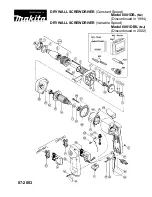
Technical description
Signal processing and amplication
Signal inputs
The LA12X features four input connectors allowing it to receive four analog signals, four digital signals, or two analog
and two digital signals, depending on the input mode selected by the user — see section
(p.44). This
architecture also allows digital-to-analog or digital-to-digital fallback.
Analog inputs
The LA12X can be fed with up to four balanced analog audio signals using XLR female input connectors ANALOG IN A
to ANALOG IN D — see illustration in section
(p.11). Each analog input port is ESD protected.
The analog input panel also features four XLR male link connectors passively wired to the input connectors. They allow
transmitting the input signals to daisy-chained amplied controllers. Each analog link port is ESD protected.
To be processed by the DSP, the analog signal must be converted into a digital signal. For this purpose, the LA12X
amplied controller is tted with four cascaded 24-bit A/D converters with a sampling rate of 96 kHz allowing an
encoding dynamic range of 130 dB.
AES/EBU digital inputs
The LA12X can be fed with up to four AES/EBU digital audio signals (transported in pairs) using XLR input connectors
AES/EBU IN A&B and AES/EBU IN C&D.
Each AES/EBU input port is an XLR female connector. The audio signals can come from a digital mixing desk or a digital
audio network bridge compliant with the AES/EBU (AES3) digital audio standards. Each AES/EBU input port is ESD
protected and transformer balanced.
The AES/EBU input panel also features two XLR male link ports actively connected to the input ports (with failsafe relay in
case of mains absence). They allow transmitting the input signals to daisy-chained amplied controllers. Each AES/EBU
link port is ESD protected and transformer balanced.
Each AES/EBU input port is equipped with a SRC (Sample Rate Converter) that has been selected to support a wide
range of input formats (16 - 24 bits / 44.1 - 192 kHz). It converts them to the 24 bits/96 kHz internal format used by
the amplied controller. The SRC is a high-quality hardware component (140 dB dynamic range, THD+N < -120 dBfs,
strong input jitter attenuation) and provides constant propagation delay regardless of the input sampling frequency. There
is no external synchronization mode. The amplied controller’s clock always runs using its high-precision internal quartz
at 96 kHz. This ensures low jitter and high audio quality in live conditions (large cable lengths, large number of amplied
controllers) while preventing phase shift, as required for line source systems.
Digital domain benets
Keeping the signal in the digital domain will provide the following benets (with any digital mixing desk or any
audio network) compared to the analog signal distribution:
Better audio quality by removing one D/A - A/D cycle
Better dynamics thanks to the digital links’ immunity to ground loops
Optimized level chain by removing the risk of level misalignment between console and amplied controllers
Digital signal refreshed at each amplied controller in a daisy-chain
Improved maximum cable length. The LA12X has been tested with up to 305 m/1000 ft of 3 models of AES/
EBU rated cables: 1696A from BELDEN INC., OT234H from KLOTZ communications GmbH, and SC-BINARY
234 from SOMMER CABLE GmbH (single cuts, digital source signal running at Fs = 48 kHz)
LA12X user manual (en) version 2.0
12
Summary of Contents for LA12X
Page 1: ...LA12X user manual en...
Page 5: ...Latency 70 Remote control and monitoring 70 Physical data 70 Approvals 71 5...
Page 16: ...Installation Refer to the LA RAK II user manual LA12X user manual en version 2 0 16...
Page 71: ...Approvals Approvals 71 LA12X user manual en version 2 0...
Page 72: ......













































